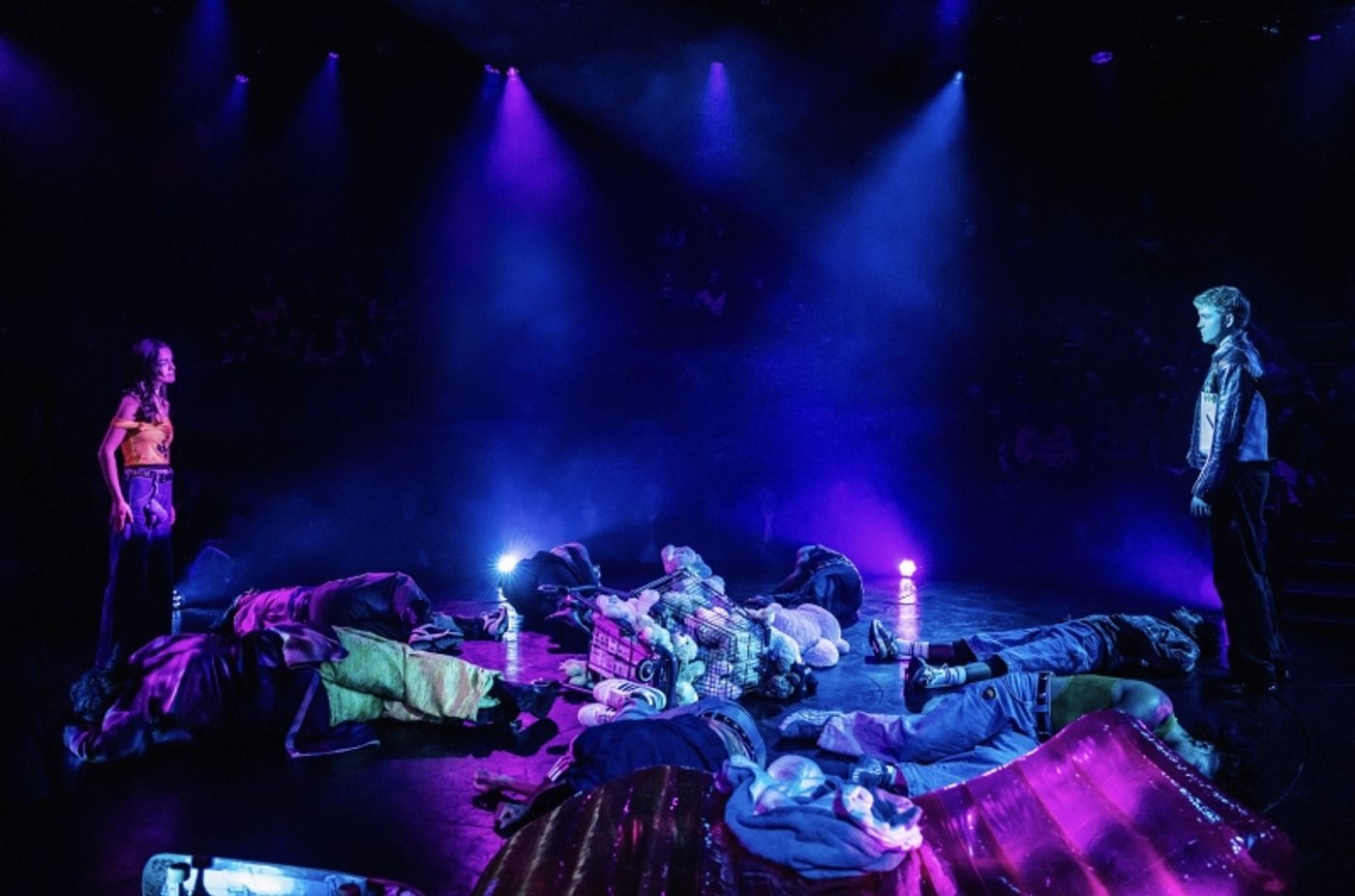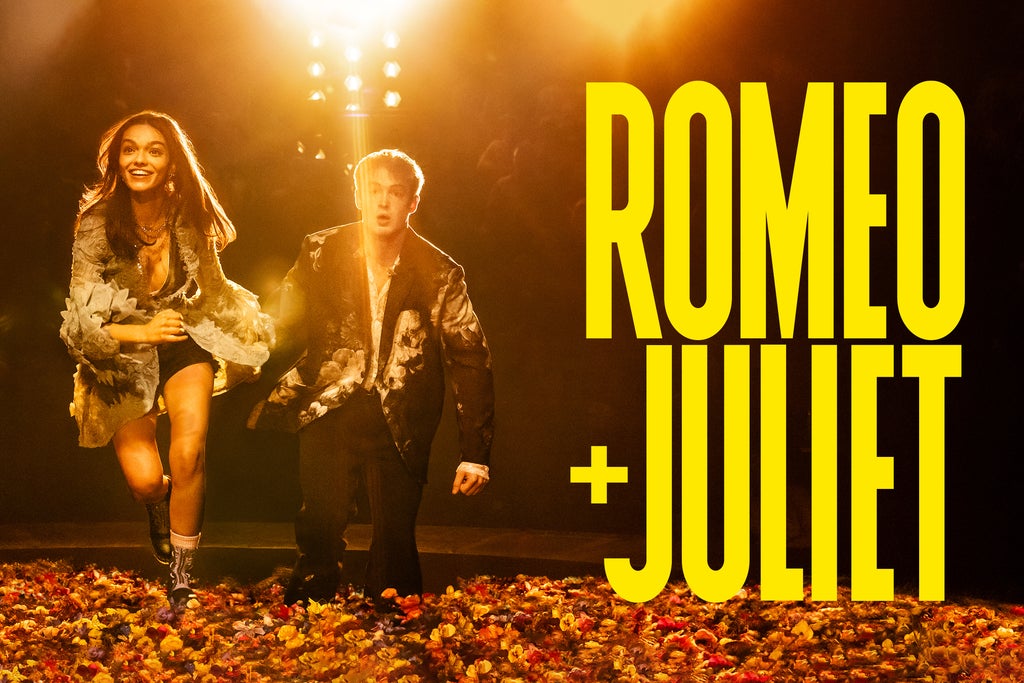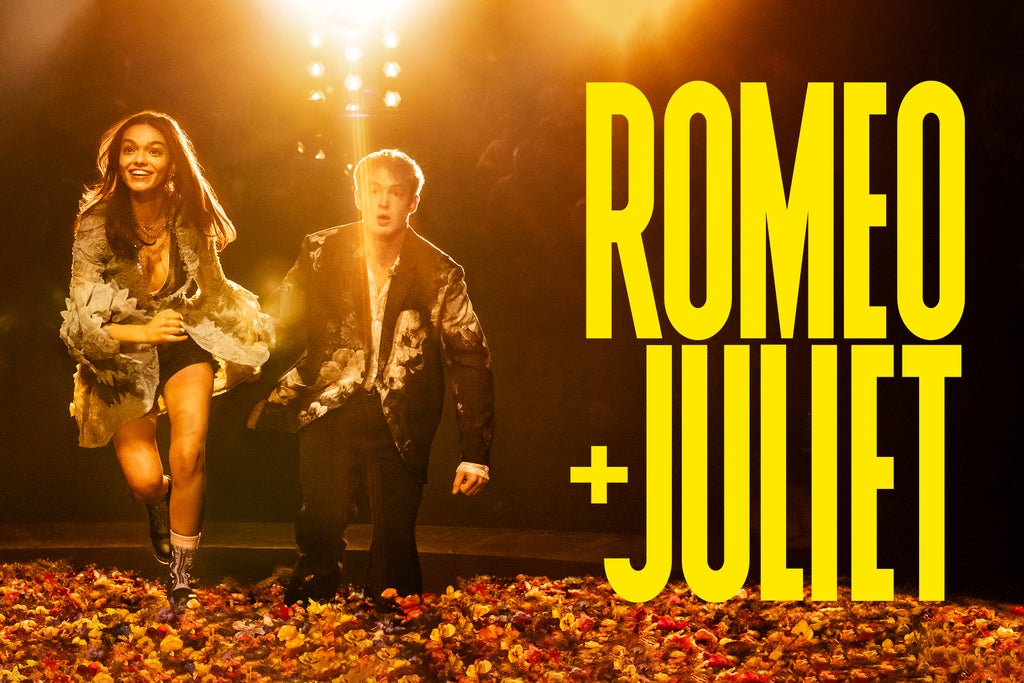A History of ROMEO AND JULIET
Jennifer Ashley Tepper Is answering your questions with Broadway Deep Dive!
Do you have a burning Broadway question? Dying to know more about an obscure Broadway fact? Broadway historian and self-proclaimed theatre nerd Jennifer Ashley Tepper is here to help with her new series, Broadway Deep Dive. Every month, BroadwayWorld will be accepting questions from theatre fans like you. If you're lucky, your question might be selected as the topic of her next column!
Submit your Broadway question in the comments here!
This time, the reader question was: What is the history of Romeo and Juliet on Broadway?
Romeo and Juliet has returned to Broadway in an immersive and modern revival at Circle in the Square. The current Sam Gold-directed Circle in the Square production, led by Rachel Zegler (Juliet) and Kit Connor (Romeo), is Gen Z-coded, questioning gender norms, adding contemporary slang and in-jokes, and featuring a young cast styled like they are playing out the story in 2024 Brooklyn. It marks the play’s 37th Broadway production.
At the ages of 23 and 20 respectively, Rachel Zegler and Kit Connor are perhaps the youngest to play the lead characters in Romeo and Juliet on Broadway. Both actors are making their Broadway debuts. While it’s not possible to know the exact ages of every one of the actors who led the play in its earliest years in New York in the 18th and 19th centuries, the majority of actors who have played these roles on Broadway have been in their late 20s or in their 30s at the time. All who have played Romeo and Juliet for the last century on Broadway have been older than the current star-crossed lovers.

Photo Credit: Matthew Murphy and Evan Zimmerman
William Shakespeare penned Romeo and Juliet, one of his most oft-revived plays, in 1597. The piece made its way to America in 1754, with its first production in this country playing the New Theatre, New York City’s first legitimate theatrical venue. Called the New Theatre during Romeo and Juliet’s premiere American run, but called Nassau Street Theatre for many years as well, the space was intentionally built to house live performance, as opposed to spaces that were used for theater prior to that. King Lear, Othello, and King Richard III were also seen at the house during its heyday in the 18th century. The two leads in 1754’s production were billed as Mrs. Hallam (Juliet) and Mr. Rigby (Romeo), as was customary for actors at the time. (Mrs. Hallam was also known as Abigail Hallam, and was married to Lewis Hallam, who operated the theater at the time and was the first manager of a professional theatre company in America.)
Romeo and Juliet was reportedly not seen again on these shores in a major production until 1850. That season’s production at the Bowery Theatre also featured a notable actor as Juliet; Anne Sefton, a theatre manager in America during a time when women accomplishing such things was largely unheard of, played Juliet billed as “Mrs. James W. Wallack, Jr.”. The Bowery Theatre was a popular venue on the Lower East Side that thrived during the 19th century hosting a variety of different kinds of shows. Romeo and Juliet’s presence there in 1850, after being seen at the New Theatre on Nassau Street in 1754, is emblematic of the way that the theatre district was migrating northward in Manhattan.
Two more productions of Romeo and Juliet were seen on Broadway during the 19th century. (“Broadway” was not commonly referred to by that name at the time, but in hindsight, a large amount of professional New York City productions are now thought of as “Broadway productions”.) An 1869 production and an 1899 production were produced. 1899 marked the first time Romeo and Juliet was seen in the theatre district as we know it today. That production, presented on the cusp of the 20th century, was at the Empire Theatre, a glorious Broadway house that was once located on Broadway near 41st Street, before being demolished in 1953. This Romeo and Juliet starred Maude Adams and William Faversham. Adams was one of the greatest stage actors of her time. Best remembered for playing Peter Pan, she was the best paid actor of her generation, making more than $1 million per year. A new edition of Romeo and Juliet was published based on this production, and widely referred to as “the Maude Adams edition”. Faversham, who played Romeo, was also a major star of the era.
In the first decade of the 20th century, Romeo and Juliet was seen on Broadway seven times! This coincided with an overall boom of professional New York productions that happened as a result of advances in transportation technology, which resulted in more theatergoers able to attend. It also coincided with the growing sentiment that theatre was an essential New York pastime in semi-permanent spaces and with records of productions being taken down more diligently. (Indeed, there may have been other productions during the 18th and 19th centuries that were just not recorded.)
In 1903, 1904, and 1905, Romeo and Juliet played the Knickerbocker Theatre, returning for an annual engagement by popular demand. The latter two productions played in repertory with other Shakespearean classics. In the fall of 1904, Julia Marlowe (Juliet) and E.H. Sothern (Romeo) co-starred in the play, marking the first time of many that they shared the stage in a Shakespeare work. Marlowe and Sothern were one of the most beloved acting duos tackling Shakespeare in the 20th century. They were beloved for their joint performances in Much Ado About Nothing, Hamlet, and several other plays, in addition to Romeo and Juliet. They worked together constantly starting in 1904, and in 1911, Sothern divorced his wife to marry Marlowe. The two were at the helm of four total Broadway revivals of Romeo and Juliet, starting when they were 38 and 44.
1909 marked the first time Romeo and Juliet was seen on Broadway at a currently operating Broadway house. This production was at the New Amsterdam, and played in repertory with nine other plays, including several written by Shakespeare. And speaking of star-crossed lovers, this production starred real-life married couple Marie Booth Russell (Juliet) and Robert B. Mantell (Romeo). Russell sadly passed away at the age of 37, two years later.
While not technically considered a Broadway production, a major Yiddish theatre production of Romeo and Juliet was seen in New York in 1903. Its concept found Juliet part of the orthodox Capulets and Romeo part of the chassidic Montagues. This Jewish production of the play changed the characters names accordingly and was set in Russia. Over the years, many other major productions of Romeo and Juliet have played New York without technically being on Broadway as well. Among these have been several Public Theater Productions in different theaters, including notably a 2007 revival at the Delacorte in Central Park that starred Lauren Ambrose (Juliet) and Oscar Isaac (Romeo). And of course, Broadway and beyond have seen dozens of productions of work inspired by or adapted from Romeo and Juliet that are not the play itself, from West Side Story to & Juliet.
Moving onto the piece’s subsequent history on Broadway, revivals 11 through 21 all occurred in the 1910s. Throughout this decade on Broadway, Romeo and Juliet was performed multiple times in return engagements by Sothern and Marlowe. Robert B. Mantell also returned to the role of Romeo, this time opposite new wife Genevieve Hamper, who he had married after Marie Booth Russell died. (Mantell is the only actor to play Romeo and Juliet on Broadway opposite two different wives.) In 1918, Laurette Taylor, the great actress who became best known as the original Amanda in The Glass Menagerie, played Juliet to José Ruben’s Romeo.

Photo Credit: Matthew Murphy and Evan Zimmerman
The 1920s saw three revivals on Broadway of the Shakespearean play. 1922’s was at the Longacre Theatre, about to be the home of Swept Away, and starred Ethel Barrymore as Juliet and McKay Morris as Romeo. Barrymore was 43 years old at the time and Morris was 31. The 1930s saw four revivals: two directed by Eva Le Gallienne, who also starred as Juliet opposite Donald Cameron and two produced by Katherine Cornell, who also starred as Juliet opposite Basil Rathbone and then Maurice Evans. These players were among the top Shakespearean artists of their day and each of these Romeo and Juliets was a Broadway event.
Echoing the smaller number of Broadway productions per season as the 20th century hit its mid-point and later years, there were six revivals of Romeo and Juliet between 1940 and the new millennium. Laurence Olivier produced, directed, designed, and starred as Romeo opposite his wife Vivien Leigh as Juliet in 1940, the year they were married. Olivier noted in his bio that he had previously played Romeo in London in 1935, when he and John Gielgud had switched back and forth between Romeo and Mercutio at alternating performances. This production was opulent and noted for its expensive physical elements and large cast.
A 1951 production at the Broadhurst starred Olivia de Havilland as Juliet. It was her Broadway debut playing the teenaged role, at age 34; Douglas Watson was Romeo. The original production of The King and I opened during the same week. The Winter Garden saw a large scale production in 1956 that came from the Old Vic. A 1962 City Center production found stars Joanna Dunham and John Stride both within closer range of the characters’ ages at 25 years old.
In 1977, the current home of Romeo and Juliet in 2024, Circle in the Square, saw its first revival of the show. This production starred Pamela Payton-Wright as Juliet and Paul Rudd (not that one) as Romeo. Payton-Wright was 35 years old, but fewer commented on her age than had commented on de Havilland’s. (Rudd was 36.) It was the first time the Circle in the Square theatre company attempted to produce a Shakespeare play; the script was shortened and the production design bare. Its worth noting that this production at Circle had audience members on three sides of the action, while the current revival is played fully in the round rather than in a thrust setup.
Estelle Parsons directed a 1986 production at the Belasco that was played in repertory with a focus on schools seeing Shakespeare classics. The New York Shakespeare Festival-headed production announced they would use a deliberately multiracial cast and focus the production of the show on how to introduce young people to Shakespeare in a way they could relate to.
The most recent Romeo and Juliet on Broadway was a 2013 version at the Richard Rodgers that starred Condola Rashad as Juliet and Orlando Bloom as Romeo, in his only Broadway appearance to date. The production was done in modern dress; unlike the majority of Broadway’s Romeo and Juliets, but like the current production, the show was set in present day. Bloom was a 36-year-old Romeo and Rashad was 27.
The current production of Romeo and Juliet, which also boasts movement by Sonya Tayeh and music by Jack Antonoff, in addition to all previously mentioned players, is bringing the play into a new era with its youthful casting and concept.




